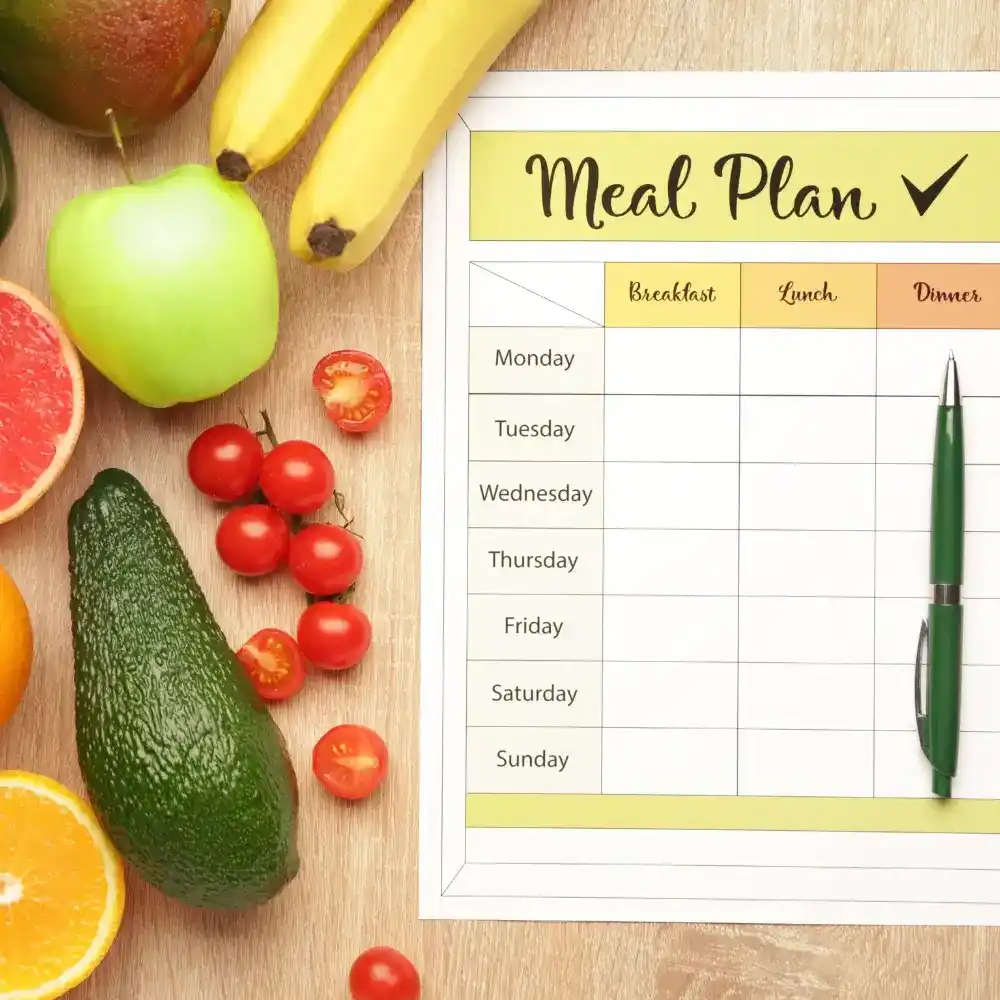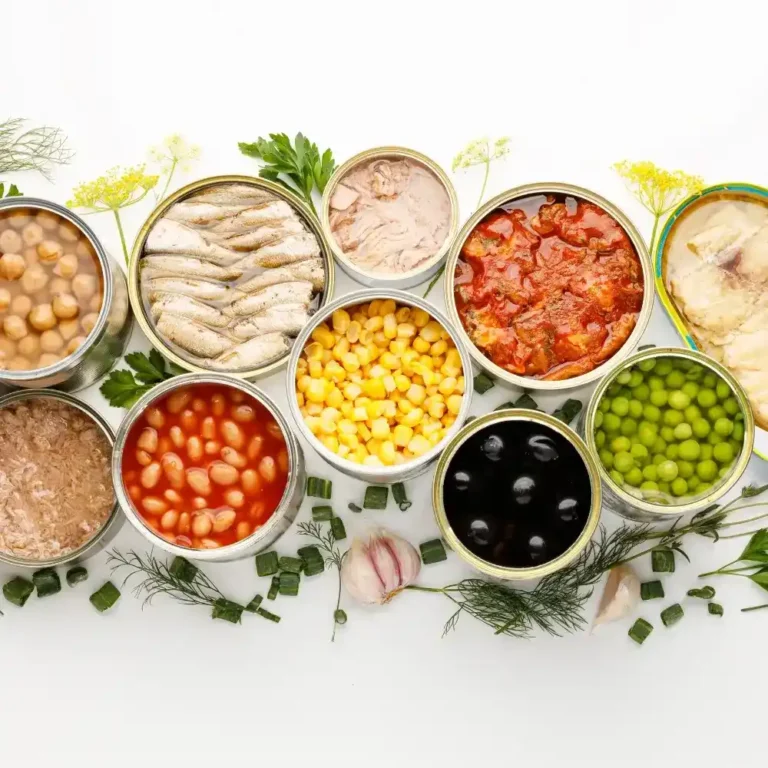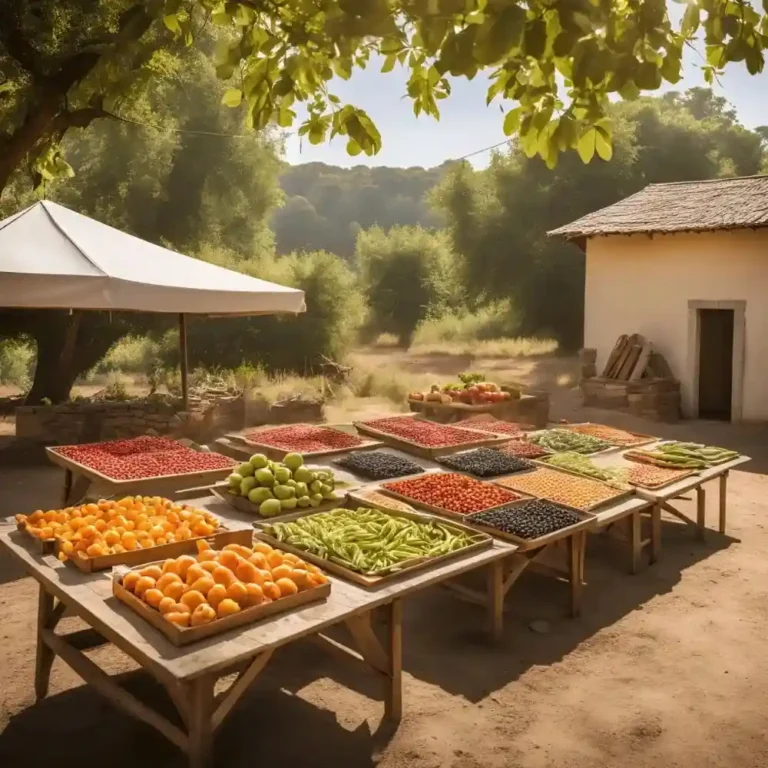Meal Planning
Introduction
Meal planning is an invaluable skill that helps you manage your time, budget, and nutrition. By creating a thoughtful menu, you can streamline your grocery shopping, reduce food waste, and ensure balanced, healthy meals for you and your family. Whether you’re new to meal planning or looking to refine your approach, this guide will walk you through the process of creating an effective and enjoyable menu. We’ll cover everything from setting goals and choosing recipes to organizing your shopping list and preparing meals in advance.
Table of Contents
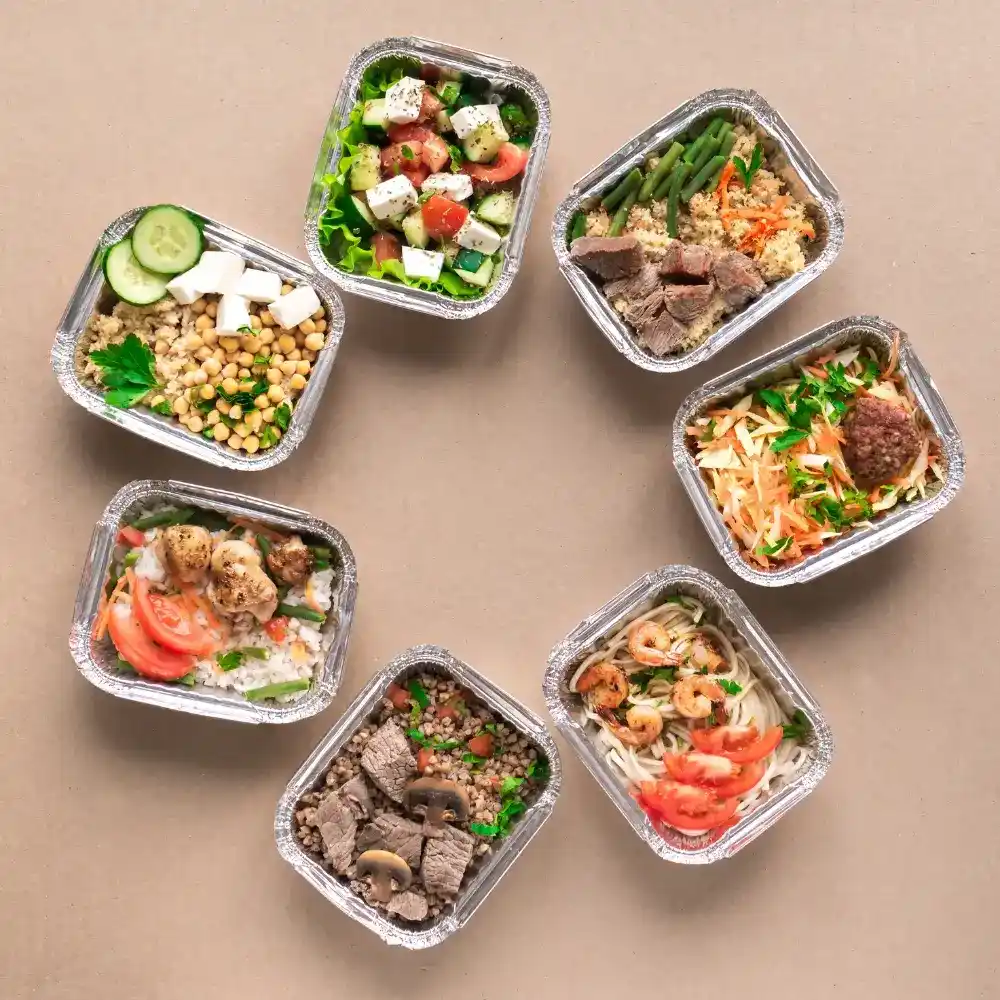
Benefits of Meal Planning
Meal planning offers numerous advantages that can improve your daily life in various ways. Understanding these benefits can motivate you to adopt and maintain a consistent meal planning routine.
Time Management
By planning your meals in advance, you can save time during the week by knowing exactly what you’ll be cooking and when. This eliminates the daily stress of deciding what’s for dinner and reduces the number of last-minute trips to the grocery store. With a clear plan in place, you can streamline your meal preparation and free up more time for other activities.
Budget-Friendly
Meal planning helps you stick to a budget by allowing you to make a precise shopping list based on your menu. This reduces the temptation to buy unnecessary items and helps you take advantage of sales and bulk purchases. Additionally, planning your meals around seasonal produce and affordable ingredients can further lower your grocery bill.
Reduces Food Waste
When you plan your meals, you can ensure that you use up ingredients before they go bad. This minimizes food waste and makes the most of your grocery purchases. By incorporating leftovers into your menu or repurposing ingredients for multiple meals, you can further reduce waste and maximize the value of your food.
Promotes Healthy Eating
Meal planning allows you to create balanced and nutritious meals that meet your dietary needs and preferences. You can ensure that your menu includes a variety of fruits, vegetables, whole grains, and lean proteins. Planning ahead also makes it easier to avoid unhealthy convenience foods and takeout options.
Setting Goals for Your Menu
Before you start creating your menu, it’s important to set clear goals and objectives. This will help guide your meal planning process and ensure that your menu aligns with your needs and preferences.
Dietary Goals
Consider your dietary goals and preferences, such as weight loss, muscle gain, or maintaining a balanced diet. If you have specific dietary restrictions or allergies, make sure to account for them in your menu. For example, if you’re following a plant-based diet, plan meals that include a variety of plant proteins and nutrient-dense foods.
Time Constraints
Take into account your schedule and time constraints when planning your menu. If you have busy weekdays, opt for quick and easy recipes or meals that can be prepared in advance. For weekends or days with more free time, you can plan more elaborate dishes or try new recipes.
Family Preferences
Consider the tastes and preferences of your family members when creating your menu. Involve them in the planning process and ask for their input on favorite meals and new dishes to try. This ensures that everyone enjoys the meals and reduces the likelihood of picky eating.
Choosing Recipes for Your Menu
Selecting the right recipes is a key step in creating a successful menu. Here are some tips for choosing recipes that fit your goals and preferences:
Variety and Balance
Aim for a variety of flavors, textures, and nutrients in your meals. Include a mix of proteins, vegetables, whole grains, and healthy fats. This not only makes your meals more enjoyable but also ensures that you get a balanced intake of essential nutrients. For example, plan meals that include a combination of lean meats, fish, beans, and tofu for protein, along with a variety of colorful vegetables and whole grains like quinoa, brown rice, and whole wheat pasta.
Seasonal and Local Ingredients
Incorporate seasonal and local ingredients into your menu for fresher and more flavorful meals. Seasonal produce is often more affordable and environmentally friendly. Check your local farmer’s market or grocery store for seasonal fruits and vegetables and build your menu around them. For example, plan dishes featuring asparagus and strawberries in the spring, or squash and apples in the fall.
Quick and Easy Recipes
Include a mix of quick and easy recipes for busy days when you don’t have much time to cook. Look for recipes that can be prepared in 30 minutes or less or use minimal ingredients. For example, stir-fries, salads, and sheet pan meals are great options for quick and nutritious dinners.
Leftover-Friendly Meals
Plan for meals that can be easily repurposed into leftovers for lunch or dinner the next day. This not only saves time but also reduces food waste. For example, roast a whole chicken and use the leftovers for chicken salad, sandwiches, or soups. Or make a large batch of chili or stew that can be enjoyed over several days.
Creating a Weekly Menu
Once you’ve chosen your recipes, it’s time to create a weekly menu. This involves organizing your meals for each day of the week and ensuring that they fit your goals and preferences.
Breakfast, Lunch, and Dinner
Plan meals for breakfast, lunch, and dinner, taking into account your daily schedule and dietary needs. For breakfast, opt for quick and nutritious options like overnight oats, smoothies, or yogurt parfaits. For lunch, consider easy-to-pack meals like salads, grain bowls, or wraps. For dinner, plan a mix of family favorites and new recipes to keep things interesting.
Snacks and Beverages
Don’t forget to include snacks and beverages in your menu. Choose healthy snacks like fresh fruit, nuts, yogurt, or cut-up vegetables with hummus. Plan for beverages like water, herbal teas, or smoothies to stay hydrated throughout the day.
Flexibility and Adaptability
While it’s important to have a plan, it’s also essential to be flexible and adaptable. Life can be unpredictable, and you may need to adjust your menu based on changes in your schedule or availability of ingredients. Be open to swapping meals or making substitutions as needed.
Organizing Your Shopping List
A well-organized shopping list is crucial for efficient grocery shopping and ensuring you have all the ingredients you need for your menu.
Categorizing Items
Organize your shopping list by categories, such as produce, dairy, meats, pantry staples, and frozen foods. This makes it easier to find items in the store and reduces the likelihood of missing anything. Group similar items together, such as fruits and vegetables, to streamline your shopping trip.
Checking Inventory
Before heading to the store, check your pantry, refrigerator, and freezer for items you already have. Cross off any ingredients you already have from your list to avoid duplicates and reduce food waste.
Prioritizing Fresh Ingredients
Prioritize buying fresh ingredients that have a shorter shelf life, such as fruits, vegetables, and dairy products. Plan to use these items earlier in the week to ensure they stay fresh. Non-perishable items, like grains, canned goods, and spices, can be stocked up for longer-term use.

Meal Prep and Cooking Strategies
Meal prep and cooking strategies can help you save time and stay organized throughout the week.
Batch Cooking
Batch cooking involves preparing large quantities of food at once and storing portions for later use. This is especially useful for busy weekdays when you may not have time to cook from scratch. For example, cook a big pot of soup, stew, or chili and freeze individual portions for quick and easy meals. Batch cook grains like rice or quinoa and store them in the refrigerator for use in various dishes.
Prepping Ingredients
Prepping ingredients in advance can streamline your cooking process and save time during the week. Chop vegetables, marinate meats, and measure out spices and sauces ahead of time. Store prepped ingredients in airtight containers in the refrigerator, so they’re ready to use when you start cooking.
Using Kitchen Gadgets
Take advantage of kitchen gadgets like slow cookers, Instant Pots, and food processors to simplify meal preparation. These tools can help you save time and effort while still producing delicious and nutritious meals. For example, use a slow cooker to prepare a hearty stew overnight, or use an Instant Pot to cook grains and proteins quickly.
Staying Motivated and Consistent
Consistency is key to successful meal planning. Here are some tips to help you stay motivated and maintain your meal planning routine:
Setting Realistic Goals
Set realistic goals for your meal planning, such as cooking at home a certain number of times per week or trying a new recipe each month. Start with small, achievable goals and gradually build on them as you become more comfortable with meal planning.
Seeking Inspiration
Look for inspiration from cookbooks, food blogs, and social media to keep your menu fresh and exciting. Follow your favorite chefs and food influencers for new recipe ideas and meal planning tips. Join online cooking communities to share your experiences and learn from others.
Tracking Your Progress
Keep track of your meal planning progress by noting what worked well and what didn’t. Use a journal or app to document your meals, recipes, and any adjustments you made. This can help you identify patterns, refine your approach, and celebrate your successes.

Adapting to Special Diets
If you or your family members follow a special diet, meal planning can help you accommodate dietary restrictions and preferences.
Vegetarian and Vegan Diets
For vegetarian and vegan diets, focus on plant-based proteins, such as beans, lentils, tofu, tempeh, and edamame. Incorporate a variety of fruits, vegetables, whole grains, nuts, and seeds to ensure balanced nutrition. Experiment with meat substitutes, such as veggie burgers and plant-based sausages, to add variety to your meals.
Gluten-Free Diets
For gluten-free diets, choose naturally gluten-free grains, such as rice, quinoa, millet, and buckwheat. Use gluten-free flours, such as almond flour, coconut flour, and oat flour, in your baking and cooking. Be mindful of cross-contamination by using separate utensils, cutting boards, and cookware for gluten-free and non-gluten-free foods.
When planning your menu, look for gluten-free recipes that are naturally free of gluten or can be easily adapted with gluten-free substitutes. There are many gluten-free pasta, bread, and snack options available in stores, making it easier to create a diverse and satisfying menu.
Dairy-Free Diets
For dairy-free diets, substitute dairy products with plant-based alternatives, such as almond milk, coconut milk, soy milk, and oat milk. Use dairy-free margarine, coconut oil, or olive oil in place of butter. There are also many dairy-free cheese, yogurt, and ice cream options available.
When planning your menu, consider recipes that naturally do not contain dairy or can be adapted with dairy-free alternatives. For example, use coconut milk in curries and soups, or dairy-free cheese in casseroles and pizzas.
Low-Carb and Keto Diets
For low-carb and keto diets, focus on foods that are high in healthy fats and proteins while minimizing carbohydrate intake. Include plenty of non-starchy vegetables, such as leafy greens, broccoli, cauliflower, and zucchini. Incorporate healthy fats from avocados, nuts, seeds, and olive oil.
When planning your menu, look for recipes that emphasize protein and fat sources, such as grilled meats, fish, eggs, and cheese. Use low-carb substitutes, such as cauliflower rice, zucchini noodles, and almond flour, to replace traditional carb-heavy ingredients.
Other Special Diets
If you follow other special diets, such as Paleo, Mediterranean, or Whole30, tailor your menu to fit the guidelines and principles of those diets. Focus on whole, unprocessed foods, and include a variety of nutrient-dense ingredients to ensure balanced nutrition.
Meal Planning for Families
Meal planning for families can be a bit more complex, as you need to consider the preferences and dietary needs of each family member. Here are some tips to make family meal planning more efficient and enjoyable:
Involving the Family
Involve your family in the meal planning process by asking for their input on favorite meals and new recipes to try. This not only ensures that everyone enjoys the meals but also encourages kids to take an interest in cooking and healthy eating.
Planning Theme Nights
Create themed nights to add variety and excitement to your menu. For example, designate one night a week for “Taco Tuesday,” “Pasta Night,” or “Pizza Night.” This provides a fun routine and makes meal planning easier by giving you a specific focus for each night.
Batch Cooking and Freezing
Batch cooking and freezing meals can be especially helpful for busy families. Prepare large quantities of family favorites, such as lasagna, chili, or casseroles, and freeze individual portions for quick and easy dinners. This saves time during the week and ensures you always have a home-cooked meal ready to go.
Healthy Snacks and Lunches
Plan and prepare healthy snacks and lunches for your family to ensure they have nutritious options throughout the day. Pack lunches the night before to save time in the morning, and keep a variety of healthy snacks on hand, such as cut-up vegetables, fruit, yogurt, and granola bars.
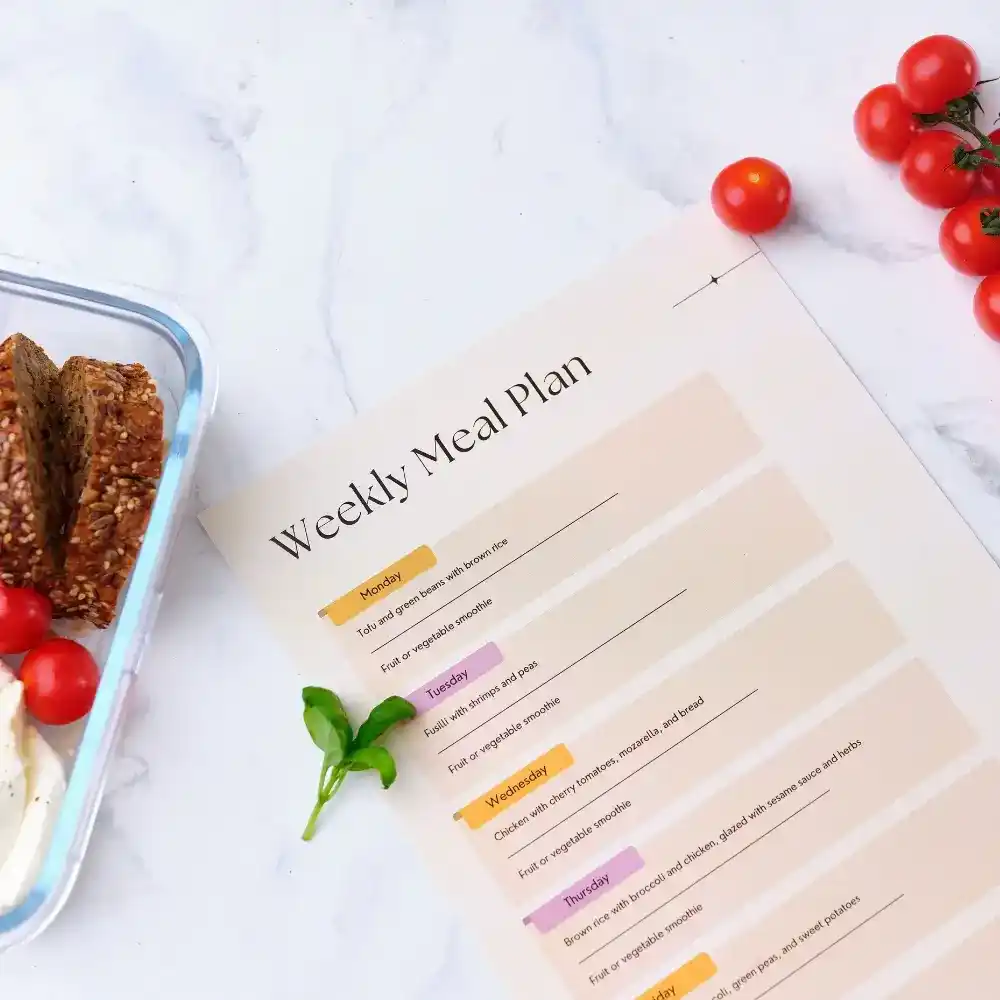
Overcoming Common Meal Planning Challenges
Meal planning can come with its own set of challenges, but with the right strategies, you can overcome them and create a successful routine.
Limited Time
If you have a busy schedule and limited time for meal planning and preparation, try these strategies:
- Use Simple Recipes: Choose recipes that require minimal ingredients and preparation time. Look for one-pot meals, sheet pan dinners, and slow cooker recipes.
- Meal Prep on Weekends: Dedicate some time on weekends to meal prep and batch cooking. Prepare ingredients in advance, such as chopping vegetables and marinating meats, to save time during the week.
- Double Recipes: Cook double batches of recipes and freeze half for future meals. This allows you to build a freezer stash of ready-to-eat meals.
Picky Eaters
Dealing with picky eaters can be challenging, but with patience and creativity, you can encourage them to try new foods:
- Offer Choices: Provide a variety of options at each meal, including at least one familiar food that your picky eater likes. This encourages them to try new foods without feeling pressured.
- Get Creative: Find creative ways to incorporate new foods into meals. For example, blend vegetables into smoothies, add finely chopped vegetables to sauces, or make fun shapes with cookie cutters.
- Involve Kids in Cooking: Involve kids in the cooking process by letting them help with age-appropriate tasks. This can increase their interest in trying new foods and make mealtime more enjoyable.
Budget Constraints
Meal planning on a budget requires careful planning and smart shopping strategies:
- Plan Around Sales: Plan your meals around weekly sales and promotions at your grocery store. Stock up on discounted items that you use frequently.
- Buy in Bulk: Purchase pantry staples, such as grains, beans, and spices, in bulk to save money. Buy larger quantities of meat and divide them into portions for freezing.
- Use Seasonal Produce: Incorporate seasonal fruits and vegetables into your menu, as they are often more affordable and flavorful. Visit farmer’s markets for fresh, local produce.
- Minimize Food Waste: Plan meals that use similar ingredients to reduce waste. For example, use leftover roasted vegetables in salads, soups, or omelets.
Conclusion
Meal planning is a valuable skill that can improve your time management, budget, and overall health. By setting clear goals, choosing a variety of recipes, organizing your shopping list, and adopting meal prep strategies, you can create an effective and enjoyable menu for you and your family. Stay flexible, seek inspiration, and involve your family in the process to make meal planning a rewarding and sustainable routine. With these tips and strategies, you’ll be well-equipped to master the art of meal planning and enjoy the benefits of balanced, nutritious, and delicious meals. Happy meal planning.
FAQ
What are the 5 basic steps of meal planning?
The five basic steps of meal planning include deciding your meals for the week, creating a grocery list, checking your pantry for existing items, prepping ingredients in advance, and organizing meals for easy access. Effective meal planning saves time and reduces food waste.
What is the meaning of meal planning?
Meal planning is the process of organizing meals for a specific period, usually a week, to ensure balanced nutrition and convenience. By practicing meal planning, you can save time, cut costs, and maintain a healthier diet.
What are the 5 principles of meal planning?
The five principles of meal planning are balance, variety, moderation, resourcefulness, and flexibility. By following these principles, meal planning ensures nutritious meals while catering to personal preferences and budgets.
What is the 60/20/20 meal plan?
The 60/20/20 meal plan refers to a nutritional distribution where 60% of daily calories come from carbohydrates, 20% from protein, and 20% from fats. Meal planning with this ratio helps maintain energy and balance.
What is the 5 5 5 meal plan?
The 5 5 5 meal plan involves creating five meals using five ingredients prepared in five minutes. This simple meal planning approach is ideal for busy schedules and promotes quick, healthy meals.
How should I make a meal plan?
To make a meal plan, start by listing your favorite dishes, checking your pantry, and noting any dietary needs. Organize meals by day and prepare a detailed shopping list. Meal planning ensures you stay organized and eat well.
What is a meal planning tool?
A meal planning tool is a digital or physical resource, like apps or planners, that helps organize meals, recipes, and grocery lists. Using a meal planning tool makes managing meals efficient and stress-free.
What are the 7 factors to consider in planning meals?
The seven factors to consider in meal planning are nutritional balance, taste preferences, portion size, preparation time, cost, ingredient availability, and dietary restrictions. These factors make meal planning effective and enjoyable.
What is a meal pattern?
A meal pattern refers to the structured way meals are distributed throughout the day, including breakfast, lunch, dinner, and snacks. Meal planning ensures meal patterns support nutritional and lifestyle goals.
